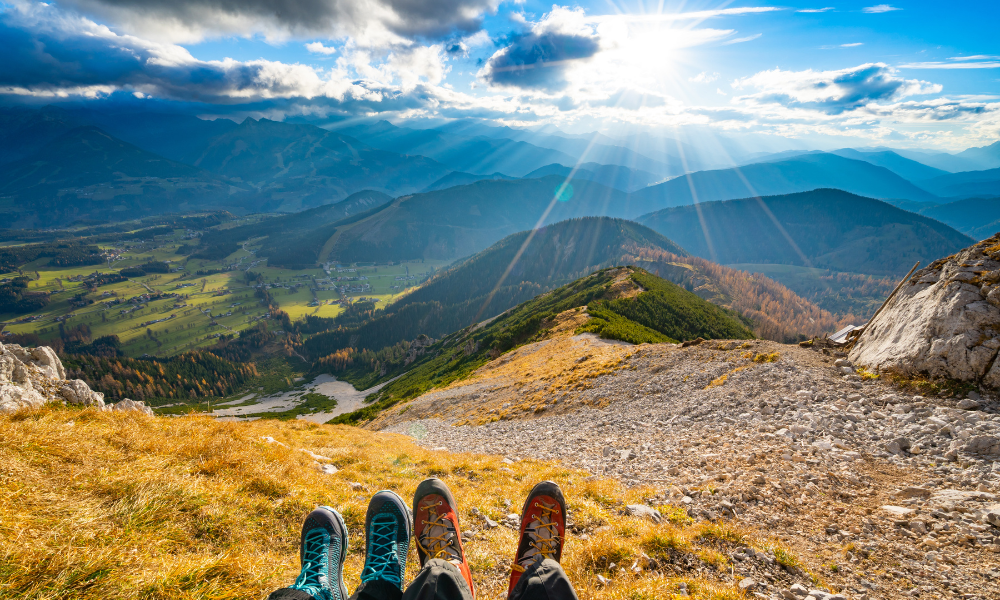
Why Hydration Alone Won’t Solve Your Altitude Sickness
Welcome to MTN Ready™'s blog, where we dive into the world of altitude acclimation and empower everyone to feel at home in the mountains. Whether you're a seasoned traveler or first-timer, understanding the essentials of altitude acclimation is key to tackling any adventure—and feeling your best while doing it.
The crisp mountain air, breathtaking views and charming towns beckon many of us to high-altitude destinations. However, amidst the excitement, there's a lurking condition that can dampen our experience: acute mountain sickness (AMS) or “altitude sickness”. While staying hydrated is important, it's not the solution to combating altitude sickness. In this blog post, we delve into why hydration alone won't solve your problems and explore other crucial factors to consider when venturing to high-altitude environments.
The Role of Hydration:
Hydration is undoubtedly vital for maintaining overall health and well-being, especially in a high-altitude setting. The air becomes thinner, leading to increased respiratory water loss and faster evaporation of moisture from the skin. Staying hydrated with water and/or electrolytes can help counteract this, but there is no evidence that electrolytes or water alone will combat altitude sickness.
The Limitations of Electrolyte Hydration:
Altitude sickness is a complex physiological response to reduced oxygen pressure at higher elevations. Merely increasing fluid intake does not address the underlying causes of altitude sickness, which include decreased oxygen saturation in the bloodstream, changes in blood pH levels and individual susceptibility to altitude-related conditions. A reduction in oxygen saturation in our blood affects our body’s ability to create Adenosine TriPhosphate (also known as ATP). This internally created biochemical is important to feeling energetic and keeping our bodies functioning properly at altitude. Hydration alone cannot fully compensate for these physiological changes, and relying solely on water and/or electrolyte consumption does not provide adequate protection against altitude sickness.
Understanding Altitude Sickness:
Altitude sickness, also known as acute mountain sickness (AMS), occurs when the body fails to acclimatize properly to high altitudes. Symptoms can range from mild discomfort, such as headaches, fatigue and nausea, to debilitating headaches and vomiting. Pay attention to your body, and if your activity is causing your symptoms to worsen, the best course of action is to descend to a lower altitude. Additionally, altitude sickness can affect anyone, regardless of age, fitness level or hydration status. Even individuals who are well-hydrated can experience altitude sickness if their bodies fail to adapt to the reduced oxygen pressure.
Supplementing Hydration with Altitude Support:
In addition to drinking water, those traveling to mountain destinations can benefit from MTN Ready™ – an altitude acclimation support and hydration product designed to enhance High Altitude Wellness™. Our balanced formula combines simple science and just three Generally Recognized As Safe (GRAS) ingredients: D-ribose, glucarate, and non-GMO dextrose. MTN Ready™ activates ATP production in the cells – which is the energy-carrying molecule that converts the food we eat into energy. We run through our natural supply more quickly when at altitude, given our bodies are working overtime to compensate for the atmospheric changes. When used proactively and repeatedly, MTN Ready™ can combat the negative effects of altitude on the body, provide much-needed energy to the heart, aid muscle recovery and help remove toxic metabolic compounds – ultimately helping you acclimate more quickly.To recap – while water and hydration are essential for overall health and well-being, it's not a complete solution for altitude sickness. High Altitude Wellness™ requires a comprehensive approach that includes proper nutrition, adequate rest, hydration and MTN Ready™. By understanding the limitations of solely relying on hydration and taking proactive steps to support altitude acclimatization, we hope our readers will have more enjoyable mountain experiences moving forward.
Here's to reaching new heights!
The MTN Ready™ Team


